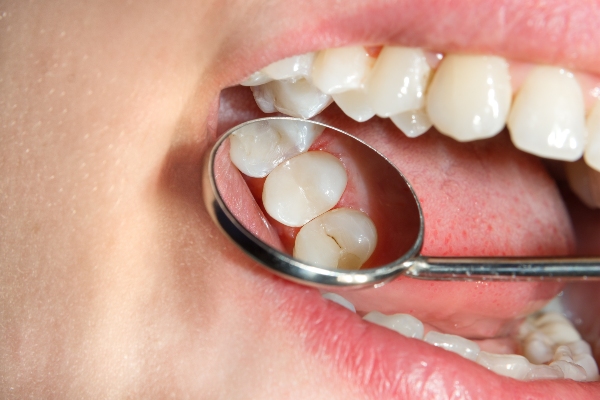 Dental fillings can consist of composite (tooth-colored), porcelain, metal, and more. Pediatric dentists use traditional and tooth-colored fillings to close small holes in the teeth, commonly caused by cavities (extremely common in children). The dentist will extract decayed tissues and replace them with one of these filling materials. Dental fillings usually last many years before the chosen material needs replacement; however, the number may vary based on dental habits such as tooth grinding or even the loss of baby teeth.
Dental fillings can consist of composite (tooth-colored), porcelain, metal, and more. Pediatric dentists use traditional and tooth-colored fillings to close small holes in the teeth, commonly caused by cavities (extremely common in children). The dentist will extract decayed tissues and replace them with one of these filling materials. Dental fillings usually last many years before the chosen material needs replacement; however, the number may vary based on dental habits such as tooth grinding or even the loss of baby teeth.
Benefits of tooth-colored fillings
Tooth-colored fillings are becoming more popular and replacing traditional silver fillings for teeth. Instead of metal and other materials commonly found in older styles of dental fillings, tooth-colored fillings consist of composite resin materials. These fillings come with several benefits.
They provide a uniform color
Since tooth-colored fillings blend with natural teeth, they are less noticeable than the traditional variety. This often offers children, especially teens, more confidence in their smiles because they do not have to worry about their peers noticing a color difference. This is one reason many prefer fillings that match their teeth, especially if the filling goes into a tooth near the front of the mouth or another more prominent location.
They are better for tooth structure
Tooth-colored fillings bind with the teeth better than older metal fillings, which helps maintain the teeth' natural structure. Especially true for silver amalgam fillings, portions of the tooth that are still healthy often need to be removed along with decayed portions to make room for the filling. Composite fillings require less enamel removal, leaving the healthy material of the tooth intact. Maintaining the structure of the teeth and mouth can help prevent future oral health problems, such as issues with biting, speaking, and the shifting of surrounding teeth.
They can be used for a variety of issues
In addition to packing holes caused by cavities, the dentist may use composite fillings to repair teeth that have been broken, chipped, or worn down due to teeth grinding or chewing on hard foods. For example, if a child has chipped teeth along with some holes due to cavities, a dentist who uses tooth-colored fillings can fix chipped teeth as well as treat the cavities in the same procedure. Ultimately, the material used to fill the cavities will match the material used to repair other issues, which is more aesthetically pleasing than using two different materials.
Safer materials
When children receive a tooth-colored filling, they avoid the small amount of mercury that silver amalgam fillings contain. Although silver fillings have largely proven safe by the FDA, avoiding them can still lead to greater peace of mind for individuals concerned with their child having slightly toxic material in their mouths.
Learn More Today
We hope you have found this article helpful. Consult our pediatric dentist if your child has a cavity, chips, or cracks in their teeth or if you are interested in learning more about tooth-colored fillings.
Request an appointment or call Hudson Valley Pediatric Dentistry at 845-363-4177 for an appointment in our Middletown office.
Recent Posts
Even with healthy oral habits, children can find themselves in need of dental restoration. Tooth-colored fillings allow pediatric dentists to provide their patients with aesthetically pleasing results. Here are some details on choosing this restorative option to repair dental cavities.Today, patients want teeth to look natural when laughing or smiling, as this can affect their…
Created with quartz or glass and using a resin medium, composite fillings are quickly becoming the go-to for many pediatric dentists. The fillings restore functionality to broken teeth by allowing the patient to bite or chew without pain. In addition, because the fillings look like natural teeth, they may help with self-esteem in relation to…
If your child has cavities, consider composite fillings. Compared to traditional fillings, the newer composite variety offers some significant benefits.Composite restorations consist of synthetic resin, a plastic material mixed with tiny particles of quartz or glass. The result is a solid, tooth-colored paste that becomes hard and sturdy when it dries. Because it consists of…


